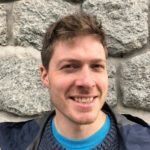Link to Pubmed [PMID] – 22022243
Link to DOI – 10.1371/journal.pcbi.1002185
PLoS Comput Biol 2011 Oct; 7(10): e1002185
Recent data shows that HIV-1 is characterised by variation in viral virulence factors that is heritable between infections, which suggests that viral virulence can be naturally selected at the population level. A trade-off between transmissibility and duration of infection appears to favour viruses of intermediate virulence. We developed a mathematical model to simulate the dynamics of putative viral genotypes that differ in their virulence. As a proxy for virulence, we use set-point viral load (SPVL), which is the steady density of viral particles in blood during asymptomatic infection. Mutation, the dependency of survival and transmissibility on SPVL, and host effects were incorporated into the model. The model was fitted to data to estimate unknown parameters, and was found to fit existing data well. The maximum likelihood estimates of the parameters produced a model in which SPVL converged from any initial conditions to observed values within 100-150 years of first emergence of HIV-1. We estimated the 1) host effect and 2) the extent to which the viral virulence genotype mutates from one infection to the next, and found a trade-off between these two parameters in explaining the variation in SPVL. The model confirms that evolution of virulence towards intermediate levels is sufficiently rapid for it to have happened in the early stages of the HIV epidemic, and confirms that existing viral loads are nearly optimal given the assumed constraints on evolution. The model provides a useful framework under which to examine the future evolution of HIV-1 virulence.

